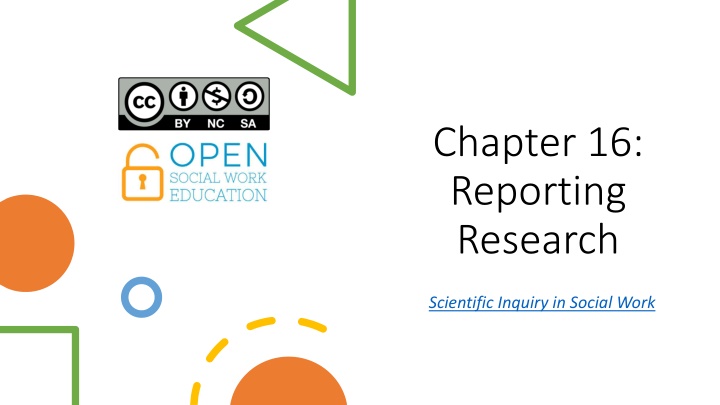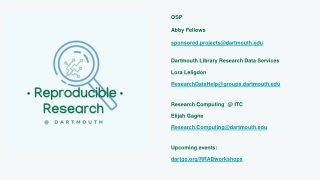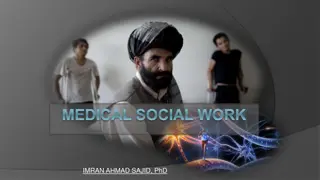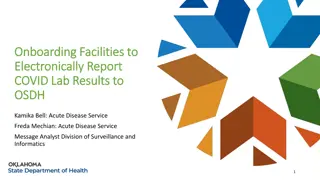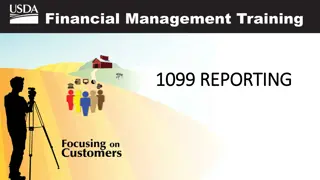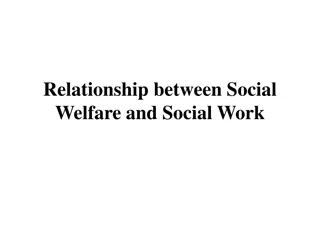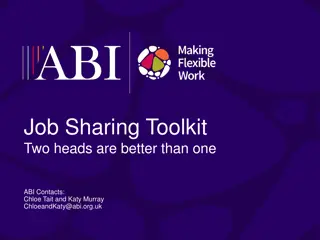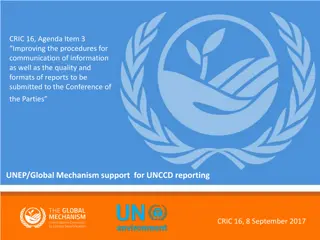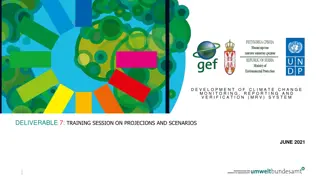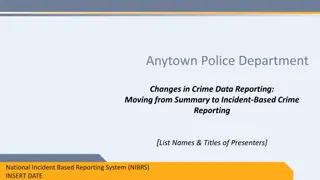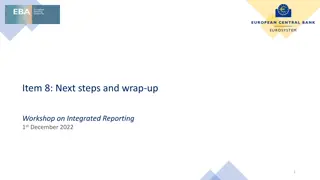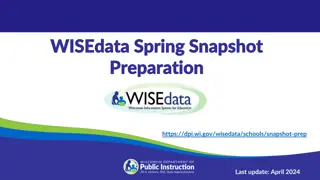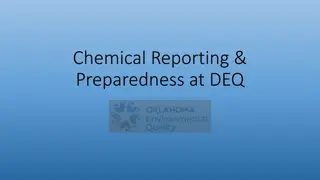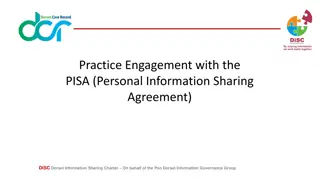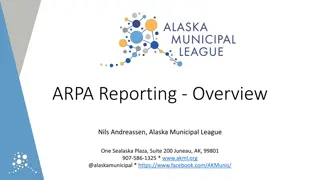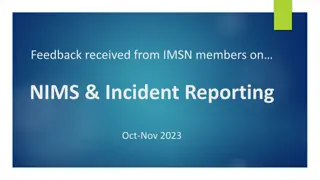Reporting Research in Social Work: Sharing Your Findings
This chapter focuses on the importance and methods of reporting research in social work. It covers what to share, how to disseminate findings, and engaging different audiences. The content emphasizes the significance of sharing research outcomes for actionable insights, guiding researchers on effective communication strategies. It discusses various forms of presenting research findings and highlights the impact on stakeholders and funding agencies.
Download Presentation

Please find below an Image/Link to download the presentation.
The content on the website is provided AS IS for your information and personal use only. It may not be sold, licensed, or shared on other websites without obtaining consent from the author.If you encounter any issues during the download, it is possible that the publisher has removed the file from their server.
You are allowed to download the files provided on this website for personal or commercial use, subject to the condition that they are used lawfully. All files are the property of their respective owners.
The content on the website is provided AS IS for your information and personal use only. It may not be sold, licensed, or shared on other websites without obtaining consent from the author.
E N D
Presentation Transcript
Chapter 16: Reporting Research Scientific Inquiry in Social Work
Chapter Overview The previous chapters in this textbook described how to create a research question and answer it using the methods of social science. Social work research is aimed at gaining knowledge for action on behalf of target populations. Research that sits idle on your computer is not of use to anyone. This chapter will help you understand how to share your work as the final step in your research process. 1. What to share and why we share 2. Disseminating your findings 3. The uniqueness of the social work perspective on science
The good, the bad, and the uglyYou must tell it all the whole story. Why did you conduct this research? How did you conduct it? For whom was the research conducted? What conclusions can be reasonably drawn from this research? Knowing what you know now, what would you do differently? How could this research be improved? Reporting research
Who is your audience? What are important social work audiences? Stakeholders? Funding agencies? How might social workers use different media to disseminate their findings, depending on the audience? Professional vs. non-professional Who is your audience? Where is your audience? How do you reach your audience? Be specific
Common forms of sharing your research findings include: 1. Formal talk: presentation lasting about 15-20 minutes using slides and other visual aids 2. Roundtable presentation: goal is to stimulate conversation, shorter presentation time and often with other professionals at the table 3. Poster presentation: tells the story of your project in images; great place to start for young researchers, students Professional Presentations Big social work conferences: CSWE/APM BPD SSWR AEA Also look at college supported conferences that feature undergraduate and graduate research - Pedagogican
State of the States in Self-Direction for Individuals with Intellectual and Developmental Disabilities (2015) Dr. Matthew DeCarlo, Radford University School of Social Work Co-authors Jennifer Hall-Lande, PhD | Matthew Bogenschutz, PhD | Amy Hewitt, PhD Background and Methods Self-Direction in 2009 Key Figures Self-direction is an approach to service delivery within long term services and supports that aims to provide greater control for individuals with disabilities and their closest supporters. The purpose of this study was to understand how self-direction has been implemented for individuals with IDD. 42 States with state-wide self-direction 102 State-wide programs 75% Offered budget and employer authority 60% Researchers conducted a document review of the CMS Medicaid waiver database and state DD department websites for information about programs. To corroborate these findings, questionnaires and administrator interviews were completed for 35 of the 42 states with self- direction. A second wave of interviews was completed with administrators in 7 of 9 states without self-direction. Interviews were conducted with program directors, waiver managers and other administrators via phone and analyzed using thematic analysis. Interview Themes Allow self-direction of at least 5 services Types of Services Offered Self-Direction in 2015 RQ Themes Subthemes Opportunities for Self- Determination Flexibility, individualization, decision-making, responsibility Strengths Strengths Improved Support Relationships Controlling who comes in the home, consistency of support relationships Restructuring Case Manager Relationships Oversight of participant spending, documentation, recruitment Rulemaking and enforcement, public perception of fraud Administrator as change agents, selective incentives Challenges Challenges Public Stewardship Increasing Program Size Future Future Directions Directions Electronic billing and records, Supports Intensity Scale, budget algorithms Using New Technology Printing Supported by the RU Office of Undergraduate Research & Scholarship
News media https://www.vox.com/the-big- idea/2017/7/17/15973478/bosses-dictators-workplace-rights- free-markets-unions TV news https://www.youtube.com/watch?v=mH3GWlj6IYA&t=13s Book reviews https://jacobinmag.com/2017/06/private-government- interview-elizabeth-anderson Podcasts https://www.libertarianism.org/media/free-thoughts/do- employers-rules-our-lives YouTube debates https://www.youtube.com/watch?v=EyYjKeW_qyk Informal outlets
